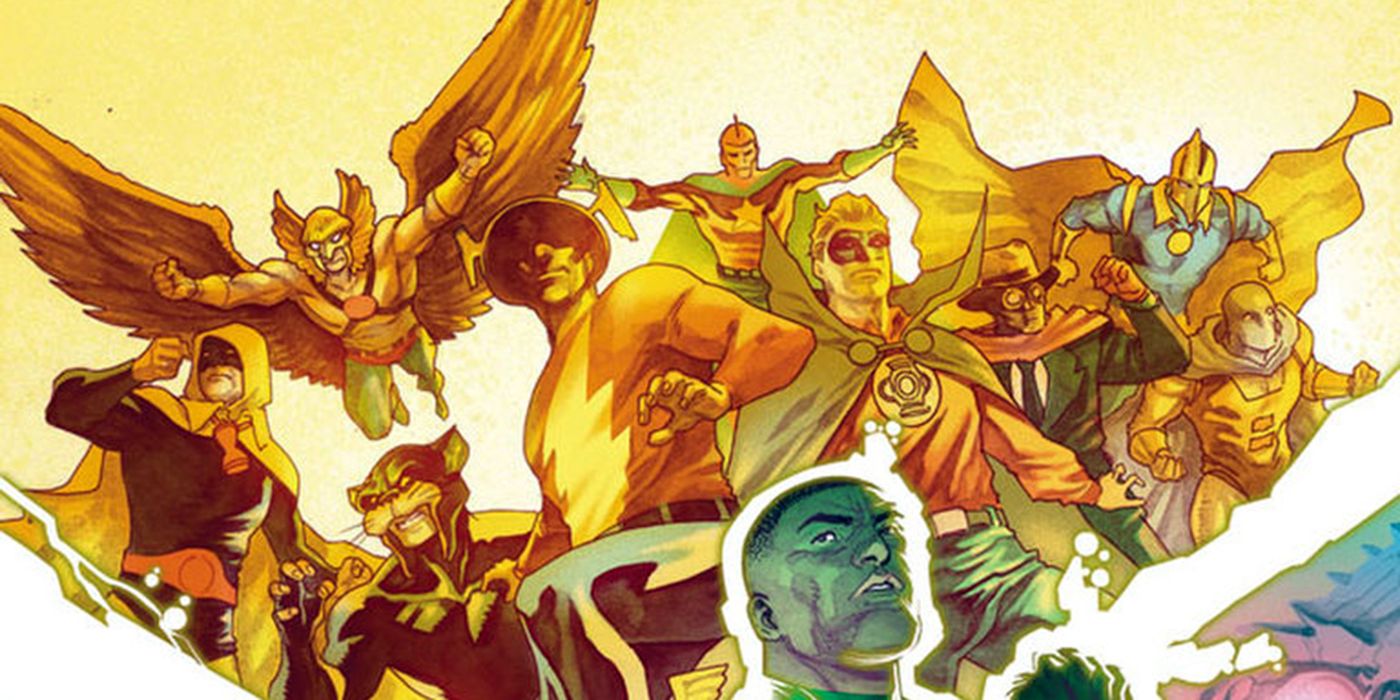WARNING: The following article contains spoilers for Justice League #31 by Scott Snyder, James Tynion IV, Jorge Jimenez, Francis Manapul, Alejandro Sanchez and Tom Napolitano, on sale now.
Facing a dangerously upgraded incarnation of the Legion of Doom, the Justice League has been forced to travel across the history of the DC Universe scouring for artifacts that can potentially give the team the edge in the coming, apocalyptic battle for the fate of the entire DCU. While Barry Allen and John Stewart have traveled back to the 1940s and found themselves face-to-face with the returned Justice Society of America at their physical prime, another team of heroes have traveled to the far-future of the DCU.
Or rather, a possible far-future of the DCU, as the heroes go to the post-apocalyptic vision of their world from Jack Kirby's Kamandi, the Last Boy on Earth. As the ensemble, led by Superman and Batman, explore Kamandi's reality, they discover it is just one of many possible futures for the DCU, with Kamandi mentioning his world is just one of many divergent futures branching out of Hypertime and that all the alternate timelines had been sequestered away for observation by Brainiac.
Hypertime was an alternate to the DC Multiverse created by Mark Waid, Ariel Olivetti and Mike Zeck in The Kingdom, the 1999 sequel to Kingdom Come. The concept posited that the main timeline of the DCU had divergent branches where the stories that took place in alternate realities occurred. After the Multiverse was restored following Infinite Crisis and 52, Hypertime had been largely abandoned, save for the occasional passing reference, most recently, during the DC Rebirth era in the pages of The Flash and Justice League.
Justice League #31 has the concept take front and center as the heroes encounter a multitude of captive futures including Kamandi's world. This theoretically makes every vision of the relative future of the DCU as canon within Hypertime; Waid and Alex Ross' Kingdom Come, all the different incarnations of the Legion of Super-Heroes, and one particularly reality that makes a surprise appearance by the end of the issue: Justice Legion Alpha.
Created by Grant Morrison and Howard Porter in 1998's JLA #22, a lead-in to the DC One Million crossover event, the Justice Legions came from the 853rd century as a combination of the far-future Justice League and the Legion of Super-Heroes defending their version of the DCU. Of all the Legions active across the universe, Justice Legion Alpha -- also referred to as Justice Legion A -- is the highest-ranked Legion and feature futuristic incarnations of the modern-day Justice League. Based out of Jupiter, the team had last appeared during the crossover event Convergence, with the team trapped in the 853rd century incarnation of Metropolis by Brainiac.
With Brainiac observing the Justice League as the traverse the various bottled realities within his collection, the possibilities of the current "Justice/Doom War" storyline have expanded considerably. All the various realities seen in Convergence could be an extension of Hypertime and provide a way to integrate elements of all the worlds seen in previous event into the DCU, including the Justice Society, Kamandi and the Justice Legions of DC One Million. It also implies that the heroes of the DCU could potentially recreate all the heroes of the entire publishing line to take on the Legion of Doom, teasing the possibility of even Elseworlds characters like Gotham by Gaslight Batman or Red Son Superman being recruited in what is sure to be the ultimate showdown by the conclusion of the storyline for the fate of all realities in the most bombastic DC Comics story in recent memory.
Justice League #32 goes on sale September 18.

